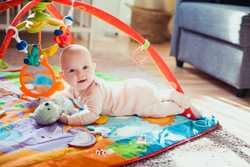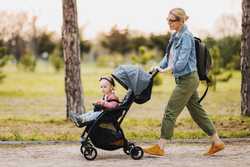- Passenger Weight: 4 - 32 pounds
- Carrier Weight: 7.6 pounds
- Dimensions: 25.2 inches long x 17.5 inches wide x 23 inches high
- Height limit: 32 inches
- Price on publish: $400
Best Infant Car Seats, According to Child Safety Experts
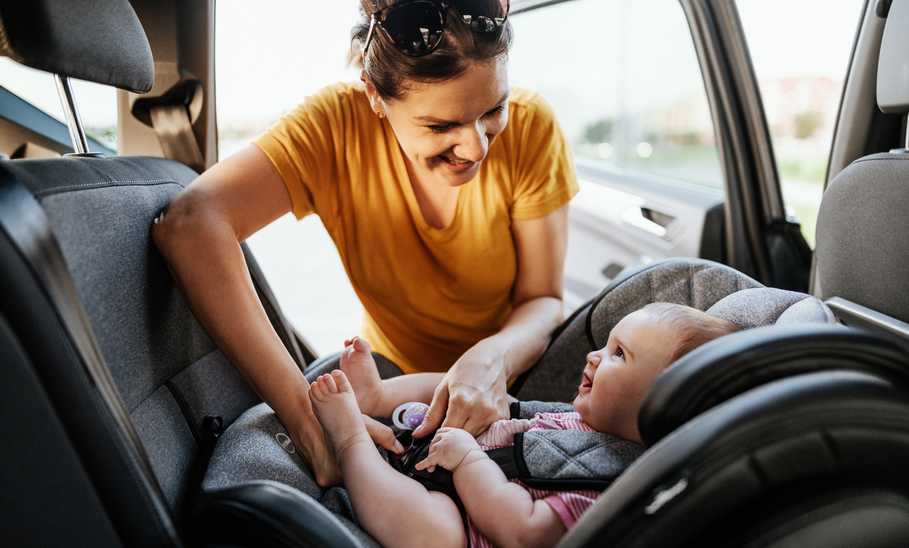
Our evaluations and opinions are not influenced by our advertising relationships, but we may earn a commission from our partners’ links. This content is created by TIME Stamped, under TIME’s direction and produced in accordance with TIME’s editorial guidelines and overseen by TIME’s editorial staff. Learn more about it.
Everything about having a new baby is nerve-wracking, especially if it’s your first, but there’s something about the thought of that tiny one riding in the back of the car that’s especially unsettling. Whether you’re worried about other drivers, bad weather, or just the prospect of scrubbing baby puke off your upholstery, you can give yourself peace of mind by picking something from our list of the best infant car seats available.

Considering parents of newborns have so much stuff to carry already, a lightweight car seat is always appreciated. Mills recommends the Nuna PIPA RX, saying that, “Weighing only 7.6 lbs, the PIPA RX is great for parents always on the go.” He especially notes the fact it uses chemical free fabrics, its four recline positions, and the optional RELX base, which makes installing the seat in most vehicles a straightforward process.
A lightweight, easy to use and, above all, super safe car seat.
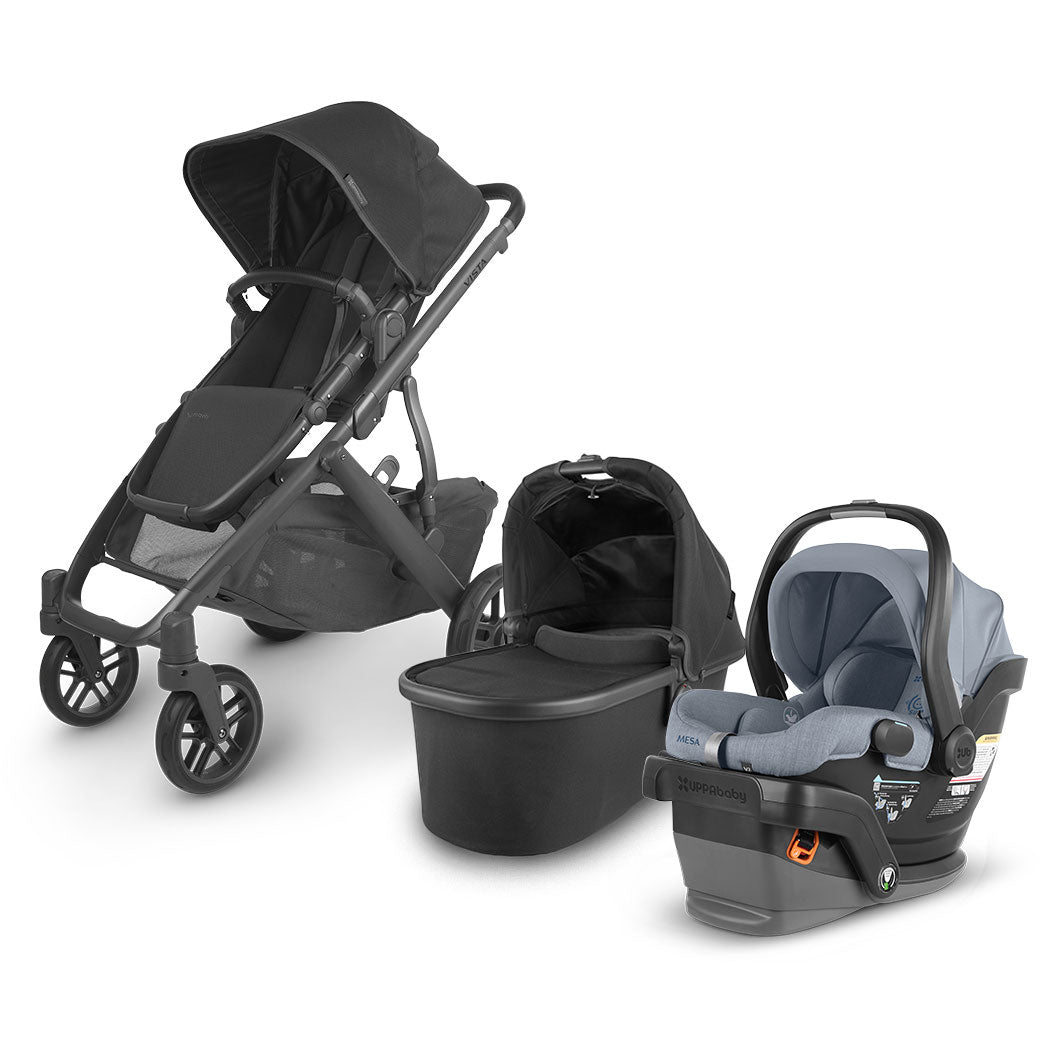
Combine a universally-loved stroller with a matching car seat for the best car-to-sidewalk transition. Mills praises the fact that you can attach this car seat without the use of car seat adaptors, as well as the one-handed release button on the carry handle. And if you like the look of the car seat, but already have a different UPPAbaby stroller, don’t worry–it fits with other models, too, like the Cruz.
A super convenient and reliable pairing, with a stroller that’ll keep growing with your little one.

Nothing makes you feel like you’re hemorrhaging money quite like having a new baby. To take at least some of the sting out of it, try this more affordable car seat from Baby Trend. “This is a great value baby car seat that can be picked up for well under $100, including the base,” says Mills. “It’s also lightweight, with a handy ergonomic side grip for easy lifting.
An inexpensive infant car seat that nevertheless meets full federal safety standards.

As someone whose kid once threw up about a gallon of semi-digested fruit salad 45 minutes into a two-hour car ride, I can attest to how important ease of cleaning is. Thankfully most infant car seats have removable, machine washable covers, but Mills suggests checking out the Cybex Aton G Swivel in particular, noting its no-rethread harness and elasticated seam for easier cover removal.
A high-tech infant car seat with easily removable, washable covers.

As mentioned earlier, ease of installation not only makes your life easier, it helps ensure that others don’t struggle with the seat when babysitting. Mills suggests trying the Chicco Fit2, saying that, “It’s not only great value, but its RideRight bubbles [easy-to-read, built-in spirit levels] ensure the seat is correctly leveled in your vehicle. The SuperCinch LATCH tightener makes it super easy to ensure the latch system is tight and secure, too.”
A safe, stylish car seat designed to be easy to use, day in, day out.
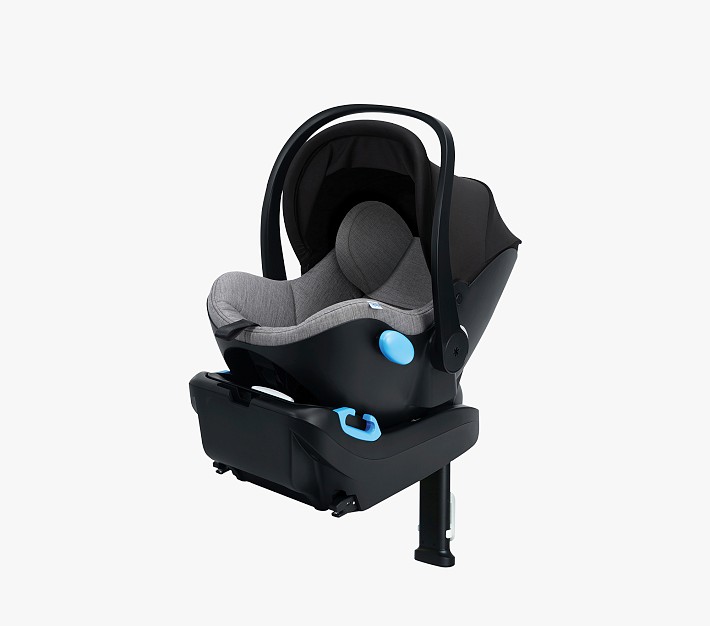
Those looking for a seat that’ll fit in a smaller car (if you’re traveling to Britain, say, where, as a Brit originally, I can confirm that the average car would fit comfortably inside the average American car), this is the one for you. “Most infant car seats have a similar footprint in the vehicle, but if you’re struggling for space, I suggest the Clek Liing,” says Mills. “It’s built with advanced materials and a rigid LATCH system similar to some of the best seats in Europe.”
A super compact model for those with less room in the back seat.
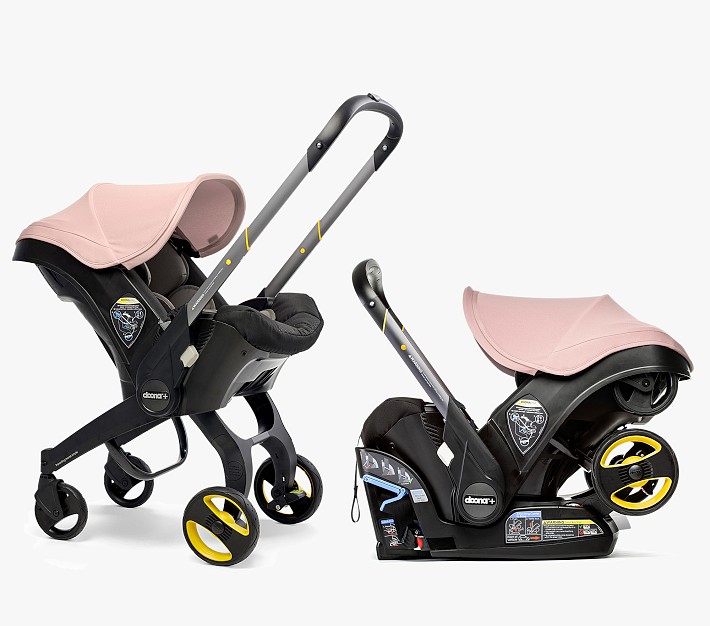
Flying with babies, who’s excited?! Alongside the crying, the my-ears-are-popping shrieks, and the dirty looks from other passengers, the sheer amount of stuff you need to take with you is exhausting. This seat, though, can make things a little easier. “This is a great travel solution,” says Mills. “Not only is it FAA approved, but with a push of a button the Doona car seat converts into a stroller, meaning you don’t have to bring a separate stroller with you on your vacation.”
An incredibly convenient, compact car seat/stroller twofer, ideal for long trips.

“This is the second recommendation for this infant car seat, but its independent crash scores are so good that the Liing deserves to be recognised,” says Mills of this compact Canadian car seat. “The rigid LATCH system and load leg help ensure minimal movement during testing, and the installation is clear and simple, reducing chances of an incorrect fit.”
As well as being compact, this is an extremely safe model, making it a no-brainer for those worried that a smaller car might be less safe for their child.
Anyone seeking a truly high end option will find the Cloud Q worth their time. “The Cloud Q from Cybex, part of their Platinum collection, offers premium fabrics and materials in conjunction with class leading safety performance,” says Mills. In particular, he praises the full lie-flat function for use on selected strollers, and the SensorSafe chest clip, which alerts you about your child’s safety via an app.
A high-end and admittedly expensive infant car seat, that nevertheless justifies its price with a ton of safety features.
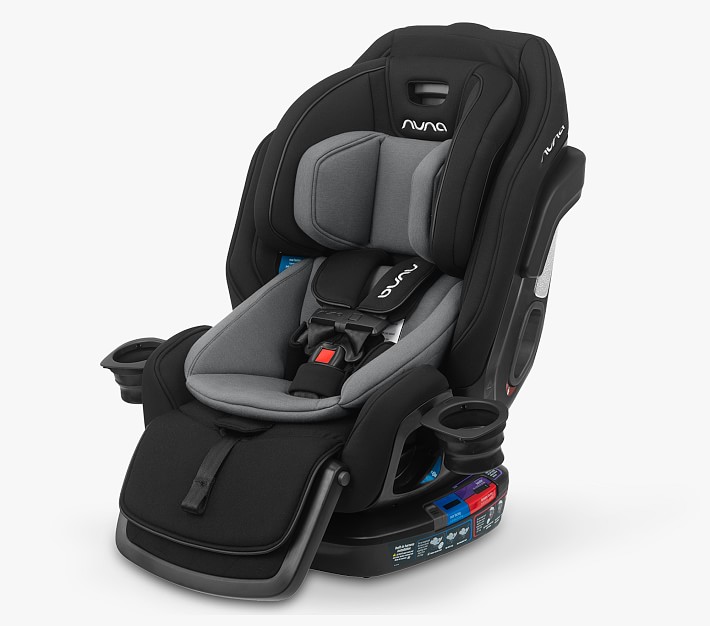
Most infant car seats only last until the kid is around 32 inches tall, or weighs around 35 pounds, so if you want something that’ll last a little longer, try an all-in-one car seat instead. “To ensure the seat is long-lasting, it's worth investing in a seat with better quality fabrics and materials,” says Mills, who recommends the Nuna EXEC All-in-One. “This car seat is suitable from birth all the way through to 120 pounds—with its all-steel frame and bamboo blended fabrics, this seat is built to last.”
A convenient, long-lasting car seat that’ll work for infants up to kids four years and older.

For the most possible bang for your buck, Graco’s SnugRide SnugFit 35 DLX strikes the perfect balance of safety, comfort, user-friendliness, and price. A relatively lightweight seat compared to some on our list, it features an anti-rebound base for additional rear-facing safety, an easy-to-remove seat cover for quicker clean-ups, and has been rigorously crash tested to ensure extra protection for your child in the event of frontal, rear, side, and even rollover crashes.
An infant car seat that ticks all the boxes while still costing less than almost everything else on our list.
Get ready, because whether you’re looking at Graco, UPPAbaby, or any other brand, there’s a lot to think about before buying an infant car seat.
It’s important to buy a seat that you know has been exhaustively tested to withstand various types of accidents, but fortunately, that’s not as tough as it sounds. “Consumers can take comfort in knowing that all car seats sold through authorized US retailers comply with the latest safety standards,” says Alli Cavasino, co-founder and CEO of JoyLet, and certified child passenger safety technician. “If you’re buying your car seat new from a reputable retailer, your car seat will have gone through safety and crash testing.”
“As a self-confessed car seat geek, independent crash testing would always be my first port of call,” agrees Jeff Mills, director at Baby & Co. “You must check that the infant carrier conforms to the latest federal safety standards (Federal Motor Vehicle Safety Standard 213).”
Mills adds, though, that meeting that standard and exceeding it are two very different things. “What truly distinguishes budget infant carriers from premium brands is the extensive in-house testing conducted as an integral part of their design process,” he says. “It goes beyond designing a seat capable of performing at 30 mph; instead, these manufacturers strive to create seats that excel at highway speeds. This additional testing incurs costs for car seat brands, and it’s undeniably reflected in the prices of the top-performing baby car seats.”
Some car seats offer safety enhancements that can help improve their performance in a crash. Joe Colella, JPMA director of child passenger safety and 2020 child passenger safety Hall of Fame inductee, recommends looking for the following:
A car seat has to fit your child perfectly, but also your car. “The right car seat is one designed for your child’s height, weight, age, and developmental needs,” says Colella. The instructions included with the seat will tell you the height and weight ranges it’s appropriate for. In terms of how it fits in the car, Colella says that, “The car seat must be correctly attached to the vehicle to perform its functions. Following car seat installation instructions and vehicle owner’s manual guidance is crucial.”
This point isn’t just about making your life easier, it’s about ensuring anyone using your car seat (say, if you left the baby with Grandpa for the day) can easily figure out how it works. “Proper installation is paramount for safety–the safest car seat is one that is installed correctly,” says Cavasino. “Choose an infant car seat that is user-friendly and comes with clear installation instructions. Some models may include features like color-coded indicators or built-in leveling systems to assist with correct installation.”
“Consider car seats that offer adjustable features to ensure a secure and comfortable fit for your child,” advises Cavasino. “Adjustable harness heights, recline positions, and headrests contribute to the adaptability of the seat as your child grows.”
From overflowing diapers to car sickness incidents to spilled snacks and drinks, every parent knows that car seats can very quickly become disgusting. It’s definitely worth considering a seat with machine-washable covers.
“Consider the car seat's suitability for long-term use, and expiration date, especially if you plan to use it for the infant stage for multiple children,” says Cavasino. “One advantage of a convertible car seat is that accommodating different stages of growth might be a cost-effective and practical choice.”
While that might all seem like a lot, it’s well worth taking the time to absorb. And if you’re also shopping for other baby essentials in anticipation of a new arrival, be sure to check out our guides to the best baby bibs, high chairs, and travel strollers.
Our selections were made by listening to the advice of our three incredibly knowledgeable experts, as well as conducting thorough research and ensuring that every one of our picks has positive customer reviews, especially in terms of ease of use, longevity, and most of all, that parents were satisfied their babies were safe in the seat.
“Infant car seats are specifically crafted for use from birth up to a maximum height of 32 inches,” says Mills. “Although the maximum weight limit may vary among different models, it usually ranges between 30-35 pounds. This weight limit aligns with the average age of an infant, typically reaching 12-15 months.”
If you’re unsure about whether it’s time to replace your seat, Cavasino advises considering the following:
● Expiration date: Infant car seats have an expiration date, usually around six to ten years after the manufacturing date. It's crucial to replace the car seat before it expires to ensure continued safety.
● Technological advancements: Consider replacing the infant car seat if there have been significant technological advancements in car seat safety since your original purchase.
● Wear and tear: Regularly inspect the car seat for any signs of wear and tear. If you notice any damage or if the seat has been involved in a moderate to severe crash, it's time to replace it.
“Infant car seats are typically designed for our youngest and smallest children, with minimum weights of three or four pounds and upper limits ranging from 20 to 35 pounds, and may only be installed and used facing the rear of the vehicle,” says Colella. “Convertible models can be used facing the rear of the vehicle for specified child height and weight ranges, and then can be converted for forward-facing use with separate height and weight ranges.”
Babies should remain in rear-facing car seats until they reach the maximum weight or height limit specified by the car seat manufacturer, according to Cavasino. She adds that, “This is typically around 22-35 pounds or when the top of the child's head is within an inch of the top of the seat. Considering the rapid growth during the early stages of a child's life, infants often outgrow their infant car seats within the first year. As a general guideline, many babies transition to convertible car seats after the age of two, or when they exceed the rear-facing limits.”
“Generally, experts recommend against using second-hand car seats for safety assurance reasons,” warns Colella. “Car seats are safety devices, so their ability to function as designed is critical.”
“The most important thing you can do is to make sure you know the origin,” says Cavasino. “I recommend always buying your car seat new, but if you do acquire a secondhand car seat, make sure that you trust the source. You want to make sure that it has not been involved in an accident, expired, or been recalled. In certain cases, if a car seat is involved in even a minor collision, it may need to be replaced. The National Highway Traffic Safety Administration (NHTSA) has issued guidelines that outline when parents should replace a car seat after an accident.”
“Additionally, car seats expire and may have been subject to a recall,” she continues. “You can check the expiration date on the unit itself along with the make, model, and model year. Use this information to look up whether the car seat has been subject to a recall on nhtsa.gov/recalls.”
The information presented here is created by TIME Stamped and overseen by TIME editorial staff. To learn more, see our About Us page.

